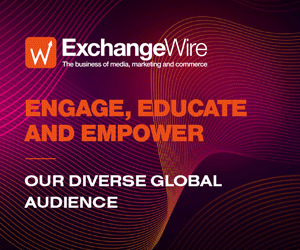Social: So what if it’s just media?
by on 15th Jul 2025 in News

In part two of this series, Dan Gee of Media Futures Market follows his assertion that social is just media now, by asking ‘So What?’
A rose by any other name might smell funky…
Indulge me.
The classic line from Romeo and Juliet suggests that a 'rose by any other name would smell as sweet'. Meaning the label doesn’t matter. But despite the pleading of an Italian Renaissance teen romantic, names do matter.
In my previous article, I argued that social media is no longer social.
For years, "social" has been sold as something different.
A new paradigm. A place of conversation, community, and culture.
But that is becoming less and less true. These apps that dominate our attention have evolved to be just other forms of media. There’s an interface, hosting content, with an audience, and a means to deliver advertisements. It’s media.
In this second part in the series, I want to scratch a bit at one of the best questions you can ever ask. 'So what?'
So what if it’s just media. The audiences across these platforms are huge.
So what if it’s just media. These platforms are where we search for inspiration and build our identities.
So what if it’s just media. It delivers a great ROI.
And at the heart of the answer lies in balance. A better balance in terms of media mix. A better balance in terms of how publishers and broadcasters are treated versus FKA social. A better balance in terms of genuinely social brand behaviours.

So what if it’s just media? The audiences are huge.
They are. Meta still delivers massive reach across both Facebook and Insta. TikTok’s growth is extraordinary. YouTube continues to dominate time spent with video.
But big audiences on a single platform don’t guarantee scaled impact. Especially when the engagement is shallow and the attention is fleeting. This is where Grace Kite’s "lots of littles" idea becomes invaluable. Not as a defence of micro-impressions, but as a call to build cumulative effect across multiple touchpoints.
Because that’s how advertising works.
Not through a single feed.
But through reinforcement, consistency, and relevance, delivered over time, across formats, in different contexts.
When you over-invest in paid FKA social, you put too many eggs in one basket, and too many impressions in the same environment. Where a creative refresh gets you a 12% increase in engagement metrics, but a better media mix could lead to a two- or three- fold increase in profitability, the choice is clear.
Rebalancing your media mix isn’t about abandoning FKA social. It’s about making sure it is one of many little touches, rather than your only big bet.
From the WARC led Multiplier-Effect study, to the brilliant ProfitAbility 2.0 from TVision, Ebiquity and a host of GroupM (another FKA) agencies, the evidence in favour of diversified investments is there. If you layer in the increasing body of work looking into attention, largely led by Lumen Research and Amplified, you also see a strong case to rebalance investment to finding audiences in higher attention environments. This research allows us to optimise for attention across channels, and within channels. Finding publishers, video solutions, and other routes to audience that actually get noticed.
So don’t abandon those channels that were once social. But look at the balance of your investment, and embrace the fragmentation of the market by finding the lots of littles that works hardest for you.
So what if it’s just media? People use these platforms to find inspiration, build identity, and express themselves.
Part of the lasting appeal of apps like Facebook, Instagram, TikTok, and beyond is that they offer a simple outlet for creativity, self-expression, and belonging. For generations that grew up with smart phones, it’s a key part of life to perform, curate, and display a version of your life that you want others to see. But increasingly, those performances aren’t being socialised. They are being posted, but marginalised in the feed in favour whatever the recommendation engine thinks will keep you on the platform the longest. Even though billions use these apps, audience fragmentation is profound. In practice, only a small fraction truly sees your content.
Organic reach on Instagram hovers around just 3.5%, and Facebook even lower at 1.65%.
This is true for brand content, too. Unless you are absolutely nailing it with hugely entertaining content, the reality is that hardly anyone will see your posts. Unless you are paying for it, your brand largely exists in the periphery of most users’ experience, if it’s there at all.
But these formerly social platforms do offer a lot of unique value to advertisers. They are flexible, fast-moving, highly targetable tools that work brilliantly when placed in service of a broader comms plan.
For a lot of smaller D2C brands they are the launchpad, with a defined ICP that can be targeted with precision.
As brands get larger, these environments tend to be more effectively deployed as an accelerant. Where you nudge people who’ve seen your message elsewhere. It’s where you reinforce a story already told, and where a rich set of intent based data points help advertisers land sales and improve conversion rates.
Additionally, not all platforms in this formerly social space are the same. Sure, following the explosion of TikTok, Instagram Reels, and Youtube Shorts came with copycat design as fast as they could. But the reasons to put these vendors on a media schedule vary greatly. Particularly when you expand out to include YouTube, Snapchat, Reddit, and Pinterest. Indeed Pinterest is far more about the inspiration aspect than self expression, and TikTok has evolved to become an incredibly popular platform for search and e-commerce, alongside the dopamine hits.
Part of the need to move beyond the label of social is that it will better enable marketers and media planners to see the nuance and situational suitability of the different apps and platforms more clearly.
There’s also a world of difference between investing in creators, who bring trust, community and narrative, and investing in platforms, which sell attention at scale. But I’ll go into this in more detail in my next piece.
So what if it’s just media? Paid social delivers strong ROI.
Sometimes, yes. But it’s really important to avoid falling into the trap of overvaluing that which is easiest to measure. Due to the high quality and immense volume of data within these walled gardens, they do a phenomenal job of harvesting intent. And not just in direct last-touch ways. For example, a study from iProspect showed that Meta ads can, for example, contribute to higher brand search.
But wider reaching studies show that we tend to over invest in short term, readily measurable impacts, at the expense of lasting growth. For example, the ProfitAbility 2.0 study suggests a 44% over investment in paid social. The most effective media mixes balance reach and response, brand and performance, long and short. That which was once social doesn’t disappear from the plan, but its role becomes more surgical.
At the heart of this what I’m suggesting is that if you name it correctly, you use it correctly.
If you treat "social" as media, you start asking the right questions:
- What is this channel good at, for my goal, right now?
- What kind of attention does it buy me?
- What role does it play in the mix…and what are the trade-offs?
- Should I be investing in creators or just placements?
This is the shift. Not a revolt against the platforms. Not some lofty call to return to analogue media.
Just a return to planning clarity.
Because advertising effectiveness isn’t about one big moment, it’s about the smart accumulation of smaller ones. Across time, across touchpoints, and across contexts. That’s the real meaning of "lots of littles." And it doesn’t happen when your budget lives and dies in a feed.
So no, a rose by any other name doesn’t always smell as sweet. Sometimes it smells like overinvestment, mismeasurement, and a media plan built on muscle memory rather than a marketer’s best interest.








Follow ExchangeWire